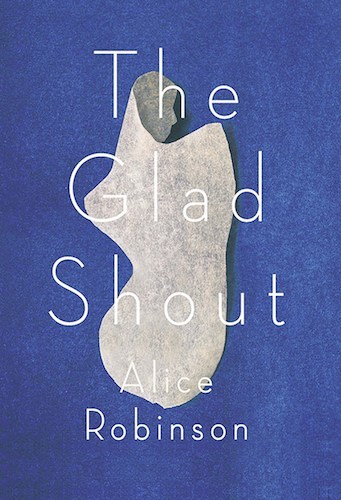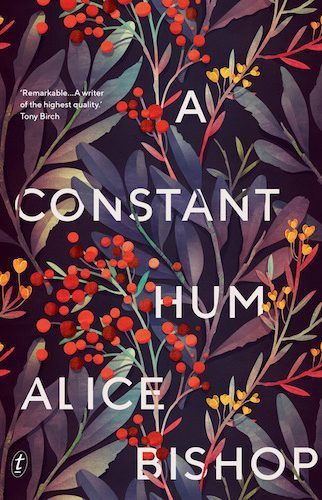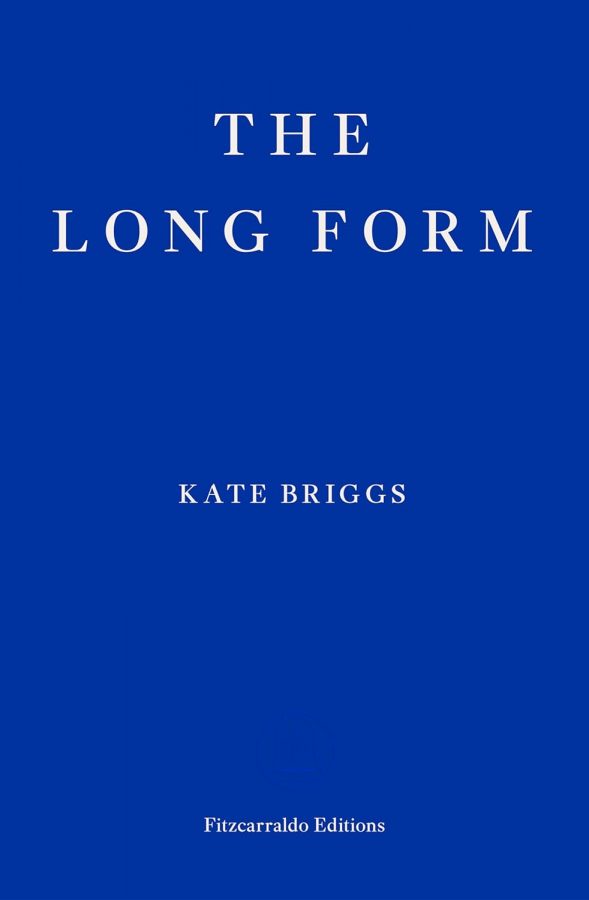A Constant Hum (2019) by Alice Bishop and The Glad Shout (2019) by Alice Robinson are new Australian additions to the burgeoning genre of climate fiction – or cli-fi. They depict the impact of a natural disaster – fire and flood – precipitated by climate change. It is the human consequences of such events that are the core of each book. The stories are set in areas around Melbourne where the two authors have lived. Both are narrated in the present tense. Both titles refer to sound: a low reverberation and a rallying cry, which set the tone for each text. Neither book makes comfortable reading. The questions Bishop and Robinson ask are linked: could these disasters have been prevented? But more importantly, how do we keep going?
A Constant Hum gathers short fictions inspired by real events. They revolve around the Black Saturday bushfires on 7 February 2009, in which 173 people died and over 400 people were injured. These fires displaced at least 7500 people. More than 2000 homes were destroyed, including the family home of Alice Bishop, the author of this collection. Lines from the poet Nayyirah Waheed and the 2009 Victorian Bushfires Royal Commission Final Report provide opening epigraphs. They announce the book as a warning and an act of remembrance in poetry and prose.
The collection is split into three parts, divided by grey shadows of the front cover: ‘prevailing’, which focuses on the enduring consequences of the fire today, ‘southerly’, ‘a cooler wind’ which carries the more immediate aftermath and finally ‘northerly’, which goes back in time to the heart of the bushfire. A Constant Hum is Bishop’s first short story collection, although many of these stories have been published elsewhere. There are 47 stories here, of which the longest are ten pages long and the shortest are only a line or two. None of the characters reappear in other stories, but selected motifs recur, creating the impression of a fractured community dealing with shared trauma.
The title of the collection takes on different meanings. At times, it signifies the sound of former forest fauna, at others, new jarringly mechanical noises. It represents the ongoing reverberation from the fire experienced by some survivors. ‘A Constant Hum’ is also the title of one of the stories, told from the perspective of a young girl who observes her father becoming increasingly obsessed with the hum of electricity powerlines connected to their street. Her father eventually moves outside to sleep, disturbed by ‘the humming he still heard, even though the power was switched off’. Elsewhere, the hum signifies the chatter of rosellas, galahs and other native birds missed and reimagined by former inhabitants of the damaged region. Recently-separated Rose, after a housewarming for her new, safer home, ‘hears the chattering of lorikeets before realising it’s just the dishwasher clinking’. Gap-year student Eman is one of many characters who return to the concrete plot where their house once stood, but he finds silence rather than ‘the usual comforting sounds of dusk’, of ‘magpies settling in and currawongs gurgling’ and ‘the echoing hum of semi-familiar voices, coming through the bush’.
Ten years after the fires, housewife Kay feels that her ‘chest still whirrs along to some white-noise hum since she watched the wool-furred dog curl up from smoke inhalation’. She tries to persuade her husband to build a fire bunker, terrified of a repeat event, but he says they cannot afford it. Bishop uses a similar metaphor in the following story, ‘Just a Spark’. Linda is giving evidence at a trial against Jake Holden, a man charged later in the story with starting one of the fires by dropping a lit cigarette. Linda’s daughter and grandson are among the deceased. In the witness stand, Linda claims that ‘white noise … follows her everywhere’ after the fire: her anger, despair and frustration for her losses paralyse her. Bishop describes how Linda tried to find out every possible detail about Jake Holden, to try to use this knowledge as power to wield against him, but later discovers that these ‘small details stop her from being able to sleep’, replaying in her head endlessly.
Bishop convincingly presents the perspectives of different kinds of survivors: children, retired couples, emergency nurses, volunteer firefighters, hospitality workers, mothers. We encounter a community split between those whose homes are burnt and ‘unburnt’. Not all of the characters are sympathetic. The narrator of ‘Comfort Inn’ affects boredom when asked to recall the events of the fire: ‘Yeah, that roar came over the hill like nothing else. Don’t ask me more; I’m tired of describing the rest.’ Later in the story, he describes the end of his previous relationship in similarly listless terms: ‘Some say I cheated on Melanie but I like to think I let her go.’ Surviving the tragedy of the fire does not absolve victims of other sins. Placed halfway through the collection, ‘Comfort Inn’ enacts a refreshing tonal shift, a comically ineffectual performance of unmoved masculinity. Similarly, in ‘Local Hero’, Eman listens to a silhouetted stranger who insists that he ‘[s]tayed and defended’ his property: ‘Didn’t let my place burn, mate. No way’. Eman knows that the fire ‘petered out’ at the end of this man’s street and that he would have stood no chance if he were closer. It is not that all of the men in these stories are naïve and overzealous. Rather, Bishop has said that she wanted to draw attention to different kinds of heroism in the wake of the fires, including quieter endurance.
Every word counts. Bishop’s use of the pluperfect tense is crushing. The two-line story ‘Before the Wind Changed’ remembers a woman loved and lost:
She’d had hair the colours of faded playground bark. I’d loved the way she walked – across Kingslake gravel, without shoes.
The collection works to remember those affected by the fires as people, not just as statistics, interviewees or welfare cases. They are people who had other problems before the fires. Perhaps they were intensified by the trauma, but rarely were they entirely shaped by this experience. For example, Sylvie finally has the impetus to leave an unhealthy relationship when her boyfriend abandons her to save himself in the midst of the blaze.
Survival mechanisms are revealed as stories unfold. Some of these are successful, others ineffectual. A father getting his home rebuilt repeats ‘Can’t complain’ and ‘At least we’re both still here’ as a mantra. It is costing him a small fortune to reconstruct their lives, but he and his daughter are still alive. He is obliged to pay for new, government-mandated fireproofing, despite being doubtful about its efficacy through their previous experience:
Both my father, in his borrowed Commodore, and John [the builder] know that double-glazed windows, extra concrete reinforcement and overpriced sprinkler systems wouldn’t do much, were the ten-metre-high flames to blow over again. They know the smell of the chemical smoke, along with the embers that would still be glowing the morning after, when anyone went back to see what was left.
These reinforcements offer the illusion of action against a natural threat that is difficult to control. In another story, retiree Theo becomes increasingly obsessed with clearing wattle growing near their house. His wife Wendy is more sceptical of the power of these actions—‘empty gutters and small fire breaks wouldn’t do much in the face of another ten-metre front’—but initially takes comfort in his actions giving her something to talk about: ‘Theo’s efforts would at least allow her to tell friends—when they dropped by for all the usual occasions—that something was being done about it all.’
This golden wattle is a motif that recurs through the collection, and intensifies through accumulation. Twisted metal is another. We learn that the fire melts down metal, but does not destroy it, so Mercedes wheel rims run ‘in silver strands’, the ridge is littered with ‘a molten watch’ and ‘a silver hip’ and all that remains of a loved partner is ‘a handful of ash and three silver-dotted molars’. Bishop depicts horrifying events through such intricate details. We follow a health worker assessing a patient whose numb foot has been badly burned: ‘He adds the detail’ that she and we have ‘heard many times, that all the silvers melted down that weekend, wedding rings and shiny foil insulation.’ Bishop uses similes to equivalent effect, transforming everyday observations into something startling. For example, she describes how ‘sheets of metal roofing … twisted up like the crisp-packet shrinkies’ you ‘put in the oven’.
Everyday items, such as mundane supermarket purchases and motel toiletries, represent the effort involved in rebuilding lives from scratch. Household objects must be recalled for insurance forms, reawakening the pain of the loss, or providing nostalgia for life before. Some characters feel freed by letting go of everything, no longer seeming to need a house filled with belongings. Others splurge class action payments or even steal to try to take back some of the things taken from them.
Some characters are interviewed by the media, but it appears that the questions are for the benefit of the audience rather than those questioned. An emergency nurse who treated those injured soon finds that ‘people don’t like talking about [her] work’, observing: ‘Unless there’s an unusually gruesome or TV-worthy happy story: the more regular gory stuff, it’s just a reminder of the uncomfortable ordinariness of disaster.’ While some of the stories in this collection describe astonishing and exhilarating acts of survival, most concern resilience and less dramatic moments that are not usually discussed. How do people survive after a life changing event? How do they find a new normality?
The Glad Shout is Alice Robinson’s second novel. Her first, Anchor Point (2015), was also about bushfires. The Glad Shout imagines Melbourne in 2045, flooded after a series of storms. Robinson explicitly orients her work as cli-fi, arguing:
Cli-fi narratives, predominantly apocalyptic or post-apocalyptic but not necessarily so, reflect, portray and perhaps even safely contain our collective fears and anxieties, particularly regarding chances for long-term survival.
This post-apocalyptic story is told through the eyes of 30-year-old Isobel, who is evacuated to the safety of a temporary stadium shelter with her three-year-old daughter Matilda and husband Shaun, after their home is flooded in a huge storm. The odd chapters are set in this future. Even chapters start in Isobel’s infancy, which takes place around the present day. They proceed chronologically through Isobel’s childhood, adolescence and marriage until the two stories join in the final chapters. Robinson takes her title from a line in the poem, ‘Gone from my Sight’, attributed to Henry Van Dyke, which is frequently circulated in the ‘little blue’ hospice book to families of those about to die. While this choice signals the novel’s elegiac mode, it also expresses optimism for endurance at times of desperation and loss.
The Glad Shout is an ambitious novel, containing many worlds for the reader to imagine: the flooded city, the stadium shelter to which the survivors are sent, the house of Isobel, her brother Josh and mother Luna, her Nonno’s farm and her grandmother Karen’s home. The story settles halfway through, after all the major characters have been introduced. Isobel decides how best to secure a future for herself and her daughter, as resources in the temporary shelter grow scarce and no rescue plan has been set out.
Each chapter rises to a dramatic crescendo, as fighting breaks out in the camp or a family drama escalates. The momentum that these moments of drama generate for the reader is slowed by the alternating chapters, which transport the story to a different time and setting with a change of characters. It can be a little frustrating to keep up with these changes in pace, and it makes the tension seem less consequential if it is immediately resolved and the narrative moves on. Isobel seems to acknowledge the frustration of this push-and-pull, observing the behaviour of her mother, Luna. Isobel experiences ‘a jab of annoyance at how easily her mother capitulates, putting on the big dramatic show for them, then giving it all away just as fast.’ Such rapid resolution to moments of conflict might appear to undermine the severity of the battles of will which just before seemed all-consuming. However, this quick change of tone contributes to Robinson’s wider argument. The characters are comforted by inconsequential human dramas, absorbed by them, rather than the less comfortable changes to their living situations, employment prospects and ambitions for the future wrought by climate change. At times of particular difficulty, ‘Isobel welcomes the familiar drama’ of familial disputes. They are ‘a safe distraction’ from problems that are harder to comprehend.
The most moving moments in the novel are not the incidents of high drama, but the asides, ignored warnings of a changing world. The impact of news reports of flooding and displacement is numbed by frequency, so the characters do not listen and feel immune. Not long before the storm, Isobel puts on the radio news, not to listen, but in the hope that the sound of talking might lull Matilda to sleep. Isobel is apathetic about the bad news of the day: ‘Nothing ever changes: trouble at the border, people fleeing south.’ Isobel feels no connection to these stories, senses no implication on her own life. She simply describes the news as being ‘so grim, relentless and somehow mundane all at once.’ The events are overwhelmingly bad but no longer shocking. Even more localised changes are regarded by Isobel only with ‘the mild curiosity that comes from encountering the hardships of strangers.’ Robinson describes how ‘whole families depart in the night with boxes and cases strapped to the roofs of their cars, leaving sheds full of furniture and in some cases, pets.’ Isobel, secured by the safety and fortune in her experience up to this point, remains unmoved and concentrates on her family’s present.
Unheeded counsels pre-empt the tragedy to come, as characters try to continue their lives as before until physically forced to evacuate. When they do leave their homes, the characters do not have the language to understand or adequately describe their situation. They use phrases from before, now rendered meaningless or cloyingly inappropriate. In the camp, Isobel befriends June, a mother of four. Reflecting on her life before with her husband, Isobel says: ‘I’m starting to think that our real life was just him treading water.’ She grimaces. ‘No pun intended.’ June and other characters diffuse tension with humour, a reference to their shared recent past, as they try to reorient themselves. Stories from before the flood are momentarily reassuring, allowing laughter from ‘nervous nostalgia’ before characters concentrate on their own survival once again.
The Glad Shout is highly character-driven. It is largely narrated in the third person from Isobel’s perspective. Isobel observes many family disputes, between her mother and grandmother and mother and brother, and she is frequently passive. She has doubts on her wedding day, but does not voice them. At one point, she reflects on her mother’s frustrations about her responsibilities as a single parent. Isobel thinks that this repression has influenced her own emotional expression: ‘No wonder Isobel has such trouble locating what she is feeling, let alone voicing her needs.’ Her abrupt severance from her familiar world forces her to reflect on what really matters to her. She considers her previous ‘self-denial’ to be a ‘warped privilege’ of affluence and freedom. Yet, for much of the story, especially the sections before the flood, Isobel wavers and hesitates, often silencing herself and following others. She is utterly unprepared for what happens, despite warnings over time.
However, after Isobel breaks away from the evacuee camp to seek safety for herself and Matilda, it becomes clear that the stories from before, memories of family relationships, incidents and dramas, sustain Isobel and give her comfort and hope. She sees the world through these memories. At a moment of acute despair, Isobel tells her daughter ‘every story she can think of – stories that are not even stories but facts, and not even facts, but just ribbons of colour and sound.’
Set against the backdrop of a changing environment, The Glad Shout features three generations of maternal relationships and additional mothers as characters. It shows their clashing attitudes, personalities and temperaments. It explores particular challenges for mothers in survival situations, looking after two bodies instead of one, with their requirements ‘gruellingly entwined.’ The narrative features a birth (‘an act of hope’ for Robinson) and an infant’s death. As with A Constant Hum, natural growth is used to symbolise time passing after people abandon an area: ‘Weeds grow up through pickets; junk mail swells in letterboxes unchecked.’ Later, as no-one returns to live, but junk mail deliveries continue: ‘Letterboxes overflow with bloating mail; weeds claw up through widening cracks in the footpath.’ In one of Isobel’s many reflections, she considers that ‘nature is tremulous with desire to reclaim these streets’. She cannot decide if this is reassuring or terrifying, ‘if what she is feeling speaks to a natural progression of some kind, or something so against the natural way of things that she should avert her gaze.’ She remains unsure, at times awed by the impressiveness of nature and astonished by the futility of human rituals such as ‘absurd life goals’, at others painfully aware of her own relative insignificance.
Reports of the current and projected effects of climate change are hard to avoid in news headlines and on social media. Readers concerned by these dispatches are unlikely to be reassured by these books. People (often men) who believe that they can stand up to natural phenomena on their own are shown to be naïve. Neither author offers advice for avoiding disaster, other than escaping ahead of time. Instead, they explore the complications of staying: the ties of home, the hope for survival and the difficulty of leaving places drenched in memory. Both books examine the role of memory in sustaining lives and providing purpose: keeping the memory of those lost alive and seeking justice. In both works, the characters’ worlds are not so much destroyed by natural disasters as profoundly changed. One family in A Constant Hum watches the shadow of their house on Google Maps, not yet updated after the fires. Technology cannot react quickly enough to the unpredictability of catastrophe. In The Glad Shout, Robinson observes that the world will have to be remapped after the coastlines have been flooded: ‘the lines so carefully recorded would have disappeared into waves, distorted with the changed shape of the sand.’
However, both books go some way to address Robinson’s aspirations for cli-fi, in how they ‘reflect, portray’ and ‘contain … collective fears and anxieties’ about climate change and long-term survival. A Constant Hum depicts how the displacement of a home affects individuals differently. For most, these effects are negative, but not all. In ‘Tinderbox’, changing places allow for a new relationship to flourish and provide an opportunity for a better home. The Glad Shout shows how people’s fears extend beyond climate change even when it seems increasingly inescapable. Both Alices are speaking together in late September in Melbourne about the ‘craft of writing fiction that explores disaster.’ The two authors acknowledge tales of real displaced people, including refugees, as inspiration for their fictional stories. They express gratitude to be able to survive, live and write these books. In their narratives, the quieter moments of survival are most striking: how tasks considered mundane become crucial and inescapable. Robinson and Bishop invite their reader to imagine their own displacement, their own losses and even their own end.

Melissa Thorne is a recipient of a 2019 SRB-CA Emerging Critics Fellowship. This is the second of three essays by Thorne that will appear on the Sydney Review of Books, alongside essays by other fellowship recipients, Madeleine Gray and Eloise Grills.








